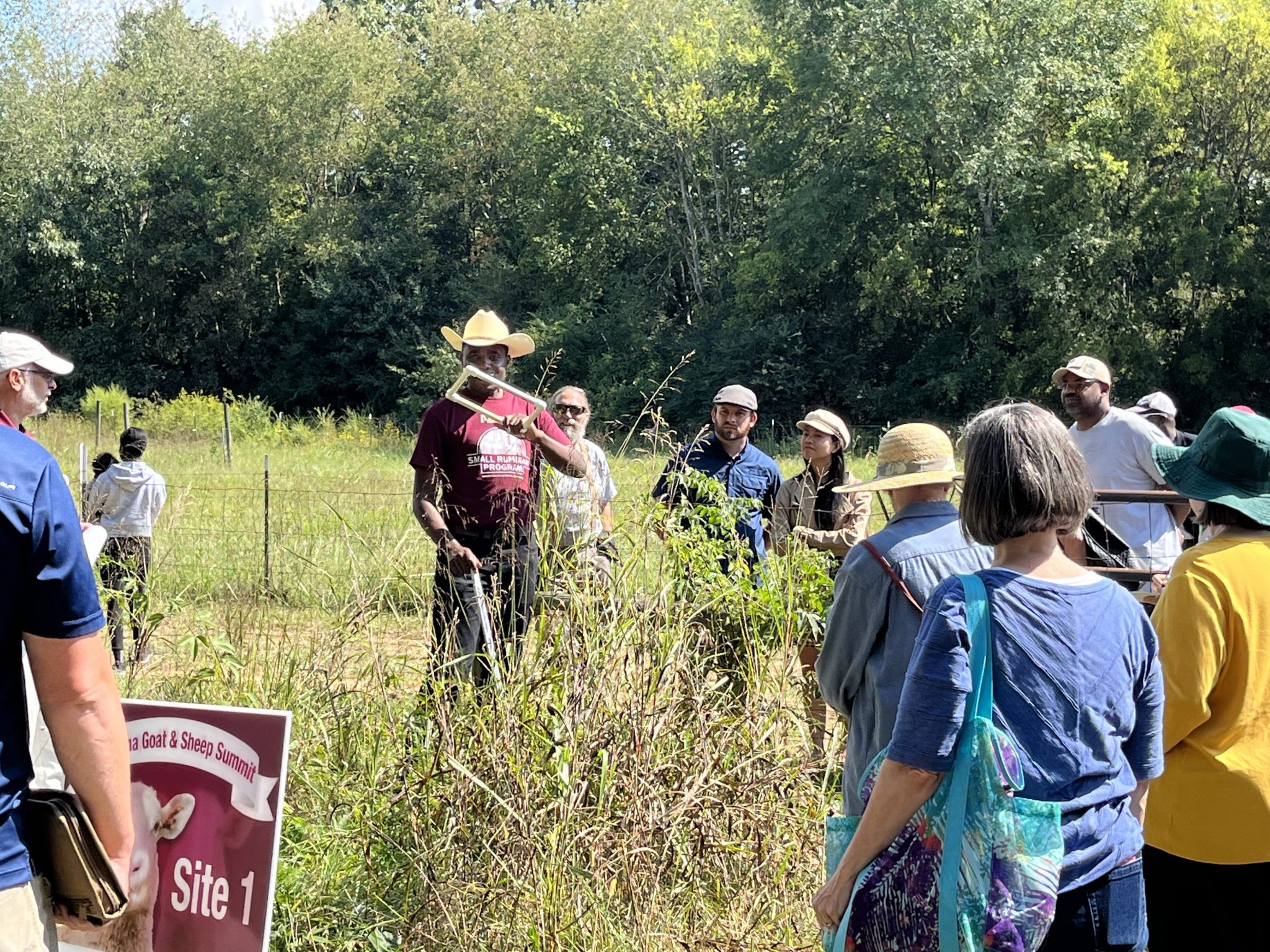About Us

With continuous requests and interest in goat and sheep production in Alabama and the success of the first Summit, Alabama Extension at Alabama A&M University (AAMU) hosted the second annual Alabama Sheep and Goat Summit. The event, coordinated in partnership with AAMU’s Food and Animal Science Department, was held on Saturday, September 17, 2022, at AAMU’s Winfred Thomas Agricultural Research Station (WTARS). The Summit allowed participants to address emerging issues and learn key practices to improve on-farm operations in sheep and goat production systems.
Introductions
The Alabama Goat and Sheep Summit commenced with greetings from Alabama Extension staff at registration booths. Participants received welcome bags with giveaways and information about the Small Ruminant Program.
The educational sessions began after registration and an introduction by Dean Floyd Walker of AAMU’s College of Agricultural, Life, and Natural Sciences. Alabama Extension administrators also greeted and introduced other presenters.
Morning Session
During the morning session, participants got an overview of WTARS, including its current projects and purpose. The overview encouraged community engagement and support of innovative agricultural research projects.
Livestock Consultant and Veterinarian Bob Omontese, Alabama Extension Animal Science Specialist Valens Niyigena, and University of Georgia County Extension Agent Shanna Reynolds led the morning educational sessions. These sessions focused on establishing a goat or sheep farm, biosecurity and disease control, and preparing for lambing and kidding.
Demonstrations and Tour
A tour and demonstrations followed the morning session. From the meeting tent, the group moved to the Western area of WTARS for a silvopasture demonstration. Producers were divided into two groups. One group toured the ongoing goat demonstration project where Kiko goats are used to control understory vegetation in forestland areas. While at the silvopasture demonstration, Valens Niyigena and AAMU Professor and Researcher Kozma Naka shared their expertise and experiences around raising goats in a silvopasture system.
Then Alabama Extension Urban Regional Extension Agent Walter Piecznski discussed the different types of fences and predator control methods for sheep and goats.
It was emphasized that although goats are a viable way to increase income from existing timber stands, the actual progression depends on the capability of a farmer and their available resources.
Exhibits and Breakout Sessions
Participants visited different vendors and exhibit booths during lunch that included:
- Alabama Extension’s Mobile STEM Lab
- Small Ruminant Program
- Alabama Extension’s Forestry, Wildlife, and Natural Resources programs
- AAMU’s Department of Biological and Environmental Sciences/ Fire Dawgs
- Local farmers selling value-added goat products
After lunch, youth and adults attended breakout sessions. Adults attended discussions and hands-on activities that included breeding management and pregnancy diagnosis in sheep and goats. In addition, District Conservationist Cedric Williams from the USDA’s Natural Resource Conservation Service offered a session on navigating challenges and opportunities of available resources for farmers.
Youth Activities
In collaboration with the Alabama 4-H team, youth engaged in fun interactive agricultural and animal science-related activities. These activities were delivered by James Fountain and William Seldon, urban regional Extension agents (UREAs). The youth concluded their session with a tour of the WTARS facility that exposed them to various Food and Animal Science Department projects. They also visited the Mobile STEM Lab and enjoyed a hayride on the farm tour. This exposure to agricultural production will hopefully cultivate the next generation of farmers, ranchers, and agricultural professionals.

